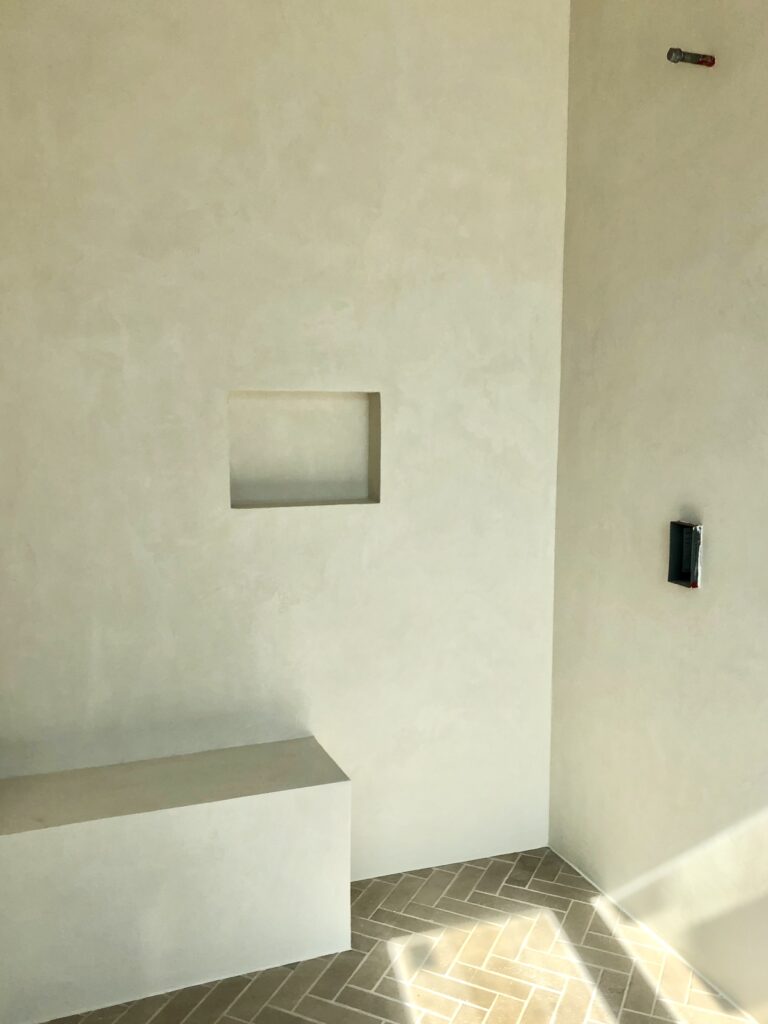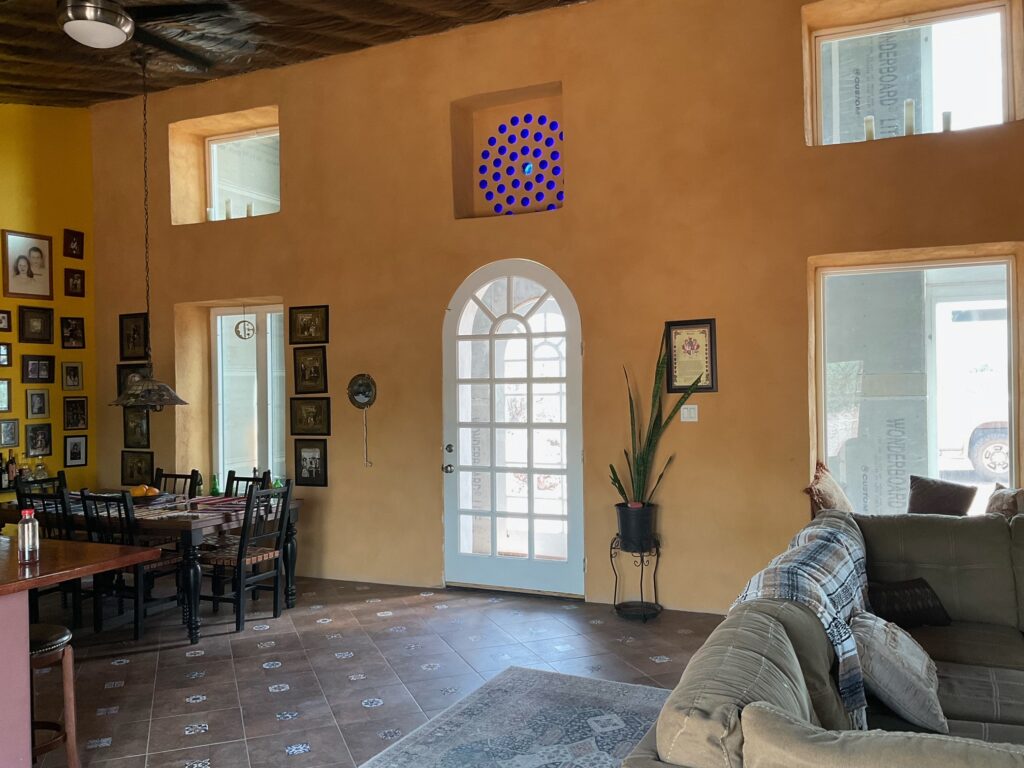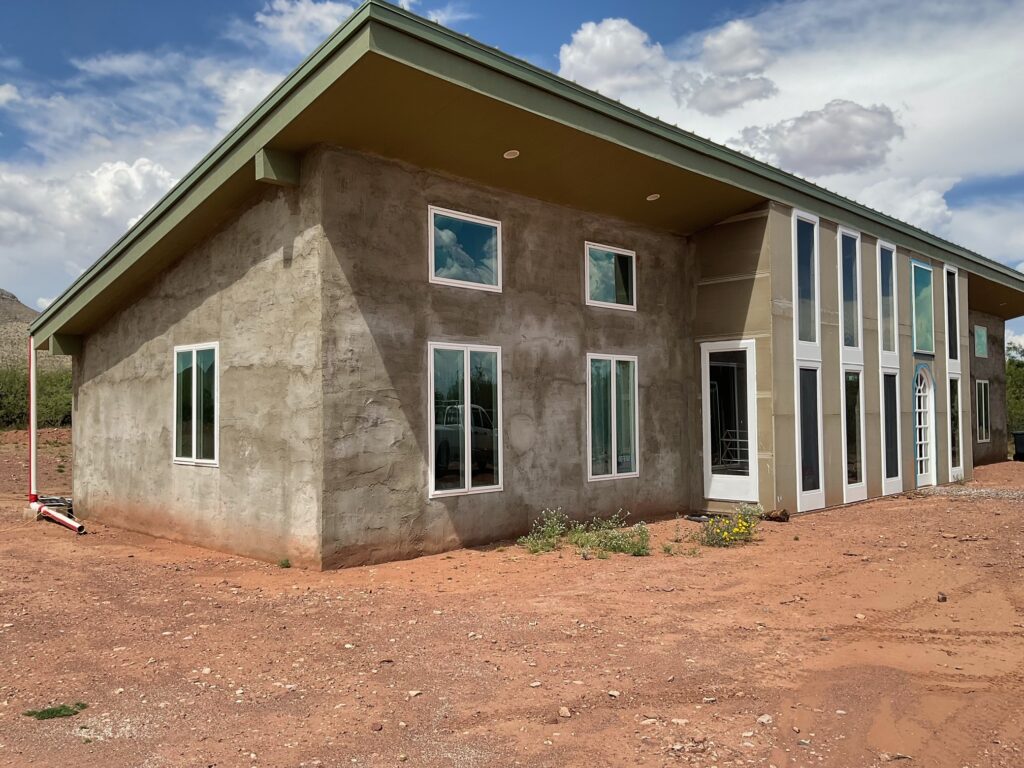
What’s Different About Lime Plaster?
November 11, 2023
Lime plaster is one of the earliest materials used for both interior and exterior wall finishes. Lime plaster has been used in various parts of the world for centuries, and its usage spans many regions and cultures. Lime plaster is made by mixing slaked lime, water, and aggregates like sand or marble dust. This simple yet effective formula was used to create stunning architectural wonders like the Roman Colosseum and the Egyptian pyramids. Lime plaster was used extensively in ancient Egypt, one of the earliest civilizations to embrace its benefits. They applied it to the walls of their temples, tombs, and palaces. The durability and aesthetic appeal of these ancient structures bear testament to the enduring qualities of lime plaster.
Color Atelier and St. Astier
Color Atelier lime plaster is made from slaked lime (calcium hydroxide), marble powder, and natural pigments. These ingredients are carefully selected to create a high-quality plaster that is easy to work with and provides a smooth and elegant finish. Lime plaster has been used for centuries and is renowned for its durability and breathability. Lime, typically sourced from limestone, is burned and then mixed with sand to create lime plaster. Color Atelier lime plasters are sourced and manufactured in the U.S.

Finishes:
Lime Plaster Smooth is their fine grade, smooth finish that can have a low-to-high sheen, depending on application technique.
Limestone Plaster is their medium to fine-textured finish, with a matte or slightly polished look. This finish creates a stone look with varying tones in matte-to-low sheen.
Tadelakt Plaster is a specialized decorative plaster that originates from a traditional Moroccan technique. Tadelakt is an ancient technique that has been used for centuries to create smooth, waterproof surfaces in Moroccan architecture. It is primarily known for its application in bathrooms, as backsplashes, and other wet areas. Color Atelier offers a modern interpretation of the traditional Tadelakt plaster using a unique blend of aged lime, marble dust, marble aggregate, and clay to create a durable, water-resistant finish. Color Atelier Tadelakt is burnished using a stainless steel trowel instead of round river stones, and is sealed with beeswax, in a water based sealer instead of soap.
St. Astier Natural Hydraulic Lime Plaster, often referred to as NHL (Natural Hydraulic Lime) plaster, is a high-quality building material that is gaining popularity in both historic restoration and modern construction projects. Named after the region in France where it is produced, St. Astier lime plaster has earned a reputation for its excellent quality and performance. Their lime plaster is made from natural hydraulic lime, which is derived from limestone containing clay impurities, but without including soluble salts, cement or gypsum. This type of lime sets through a hydraulic reaction with water, unlike non-hydraulic or “air” lime, which relies solely on carbonation to harden. The hydraulic nature of this lime provides it with unique properties ideal for various construction applications.

Finishes
NHL 2 is a fine lime plaster suitable for internal or external use. It is ideal for providing a smooth, elegant finish on various substrates, including masonry, brick, and stone. NHL 2 is the least hydraulic, meaning it is the most flexible. This is the top coat, usually applied over NHL 3.5.
NHL 3.5 is a general-purpose lime plaster suitable for most applications, both indoors and outdoors. It is used as a base and scratch coat or provides a versatile finish, suitable for both smooth and textured surfaces.
NHL 5 is a coarse lime plaster primarily used for rendering. It is suitable for providing a textured finish on masonry, brickwork, or stone. NHL 5 is the most hydraulic meaning the least flexible, but with the most strength. It is used in cold climates primarily or if you have a horizontal surface, like a dome, where more weathering can occur from standing water.
Application: Lime plaster requires more skill and experience during application compared to clay plaster. It has a longer curing time, which can extend the overall project timeline. Lime plaster is highly versatile. It can be used on a variety of surfaces, from traditional masonry and plasterboard to straw bale and cob walls. Only a true NHL Lime has the ability for it to be reworked within 24 hours of application. That means that within 24 hours, the lime can be re-worked and will continue to harden after that and not adversely affect the finish product.
Any product that has additives in it such as cement, is not able to be reworked. NHL Lime is compatible with historical restoration projects makes it a favorite among preservationists. Lime plaster is not limited to interior use. It can be applied to exterior facades, providing protection against the elements while preserving the architectural charm of historical buildings. Lime plaster continues to play a significant role in the restoration and preservation of historical structures globally. Whether it’s the restoration of ancient temples in Cambodia or medieval castles in Europe, lime plaster is often chosen to maintain the authenticity of these buildings. In recent years, lime plaster has gained popularity in sustainable and eco-friendly construction. Architects and builders in many countries are recognizing its benefits in terms of breathability, sustainability, and aesthetic versatility.
Moisture Regulation and Breathability: Lime is hygroscopic, meaning it can absorb and release moisture from the air. This makes lime plaster ideal for maintaining a comfortable indoor environment, preventing issues like mold and dampness. Lime plaster will continue to harden over time making it more durable, and as it hardens it will continuously absorb CO2 contributing to better indoor air quality. Lime is considered a carbon-neutral building material, as it reabsorbs the carbon dioxide released during the manufacturing process.
Durability and Maintenance: Lime plaster is known for its durability and longevity. It has been used in historical buildings, demonstrating its ability to withstand the test of time. Lime plaster forms a hard, protective layer that can withstand impacts and abrasion. Once applied, lime plaster requires minimal maintenance. It can be cleaned with a damp cloth or mild soap and water. Lime plaster ages gracefully. Over time, it develops a unique patina that adds character to a space. Unlike paint or synthetic plasters that may crack or peel, lime plaster remains flexible and resilient, adapting to the natural movements of a building.

Lime Plaster has proven time and time again that it is an exceptional wall finish for interior and exterior use. It stands out as a remarkably healthy building material with its natural composition, breathability, and resistance to mold and mildew. Beyond its sustainability, lime plaster’s ability to regulate indoor humidity and its minimal environmental impact contribute to a healthier indoor living environment. This ancient building technique continues to be a contemporary solution, fostering well-being through its durability and natural properties.
